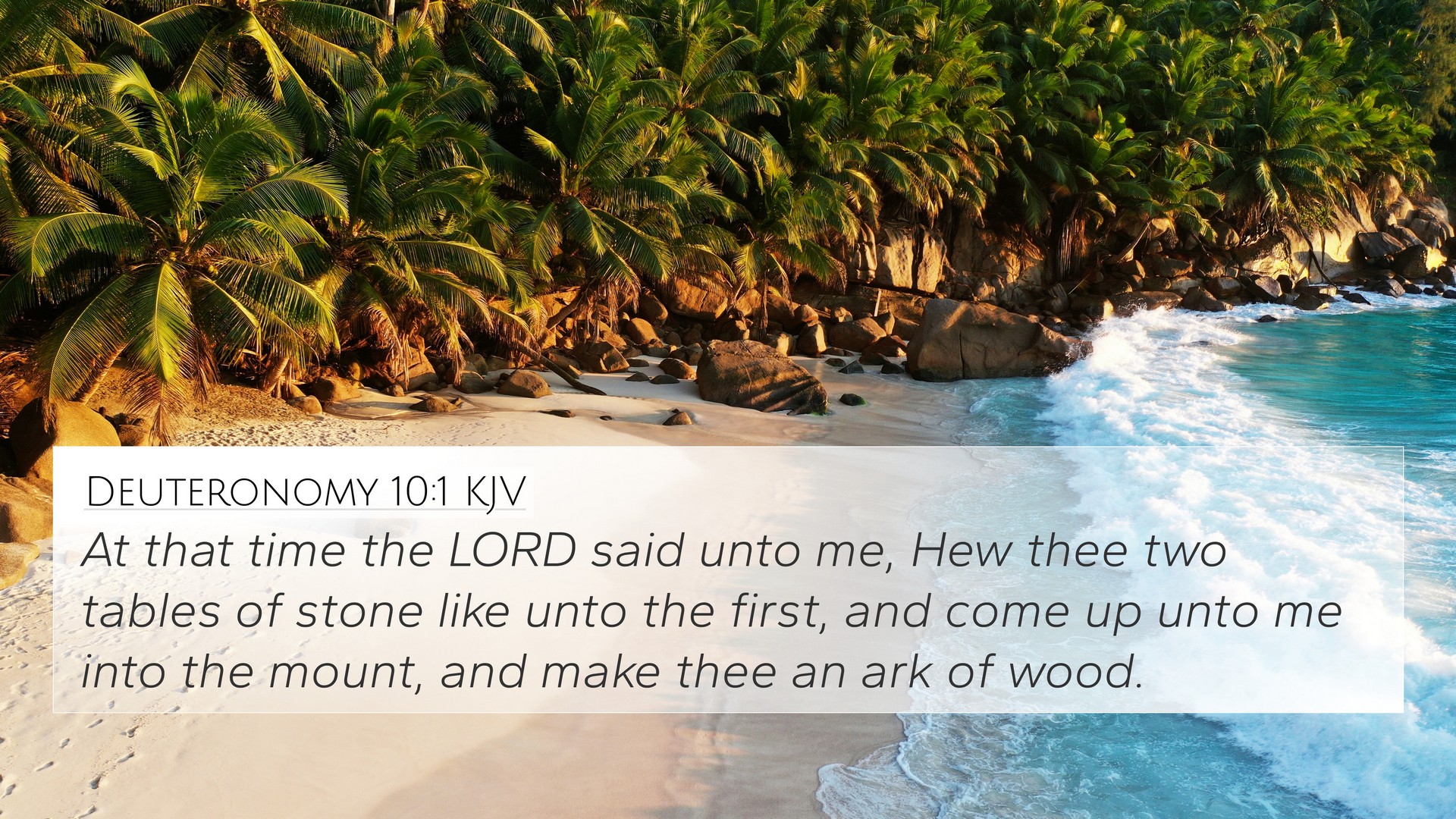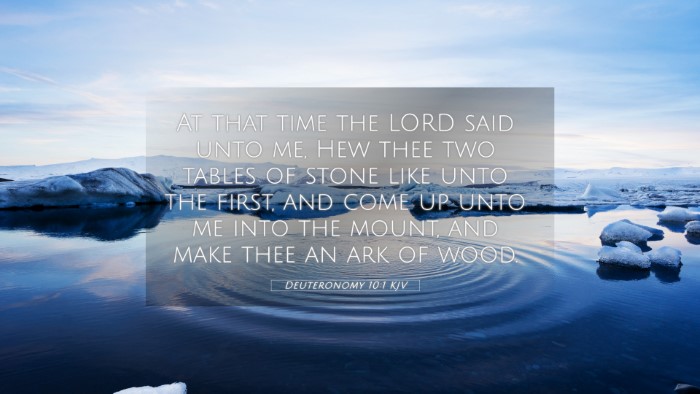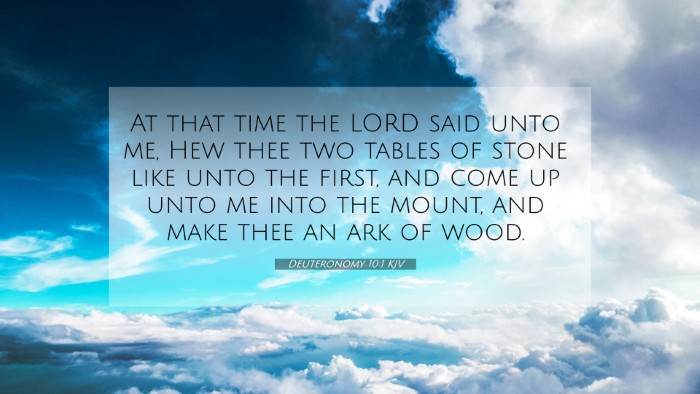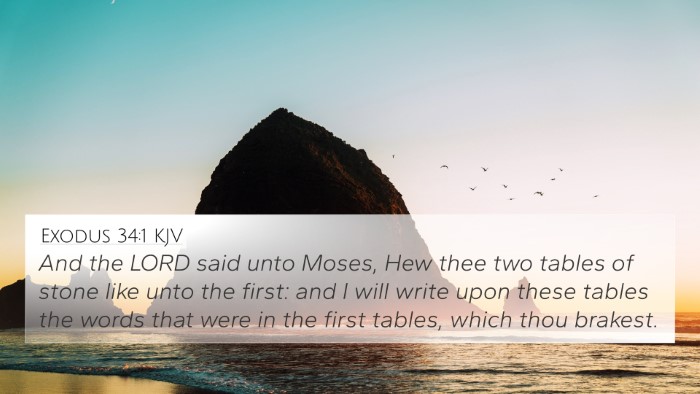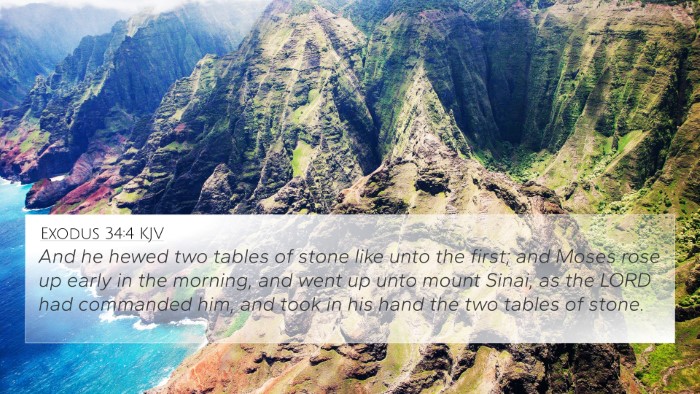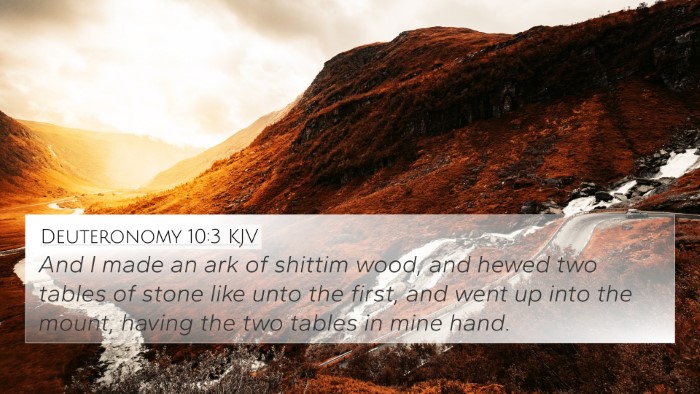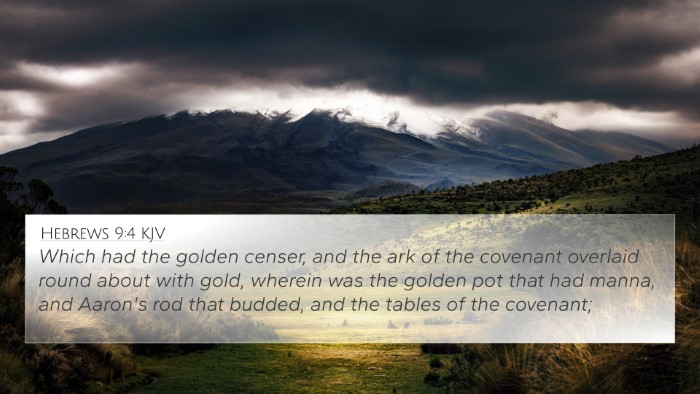Understanding Deuteronomy 10:1
Deuteronomy 10:1 states: "At that time the LORD said to me, ‘Cut for yourself two tablets of stone like the first, and come up to me on the mountain, and make an ark of wood." This verse is pivotal as it highlights the moment when Moses receives God’s commandments again after they had been initially broken. This account encapsulates themes of renewal, divine instruction, and the importance of the covenant between God and His people.
Contextual Background
Moses' role as the leader of the Israelites is emphasized throughout Deuteronomy. This particular verse occurs in the midst of recounting God’s unfolding plan for His people and serves as a reminder of God's mercy and the commitment needed from the Israelites to uphold the covenant.
Commentary Insights
- Matthew Henry: Henry points out that this instruction reaffirms God’s desire for a personal and direct relationship with His people. The act of cutting new tablets symbolizes restoration and the seriousness of adhering to God's Law.
- Albert Barnes: Barnes emphasizes the importance of the tablets of stone as sacred documents of God’s commandments. He notes the physical act of cutting the tablets reflects the work involved in establishing and maintaining the covenant with God.
- Adam Clarke: Clarke provides insight into the significance of the ark mentioned in this verse, as it would house the commandments, symbolizing God’s presence among His people. He sees this as a continual reminder of divine law and guidance.
Thematic Connections
Deuteronomy 10:1 connects deeply with several other Bible verses, illustrating parallels and cross-references that enhance understanding of biblical themes:
- Exodus 34:1-4: The account of Moses receiving the first tablets and the subsequent renewal of the pact with God.
- Deuteronomy 5:22: The reiteration of the commandments given to Moses, emphasizing their importance to Israel.
- 1 Kings 8:9: The placement of the tablets in the Ark of the Covenant serves as a continuation of the sacred tradition of maintaining God's word.
- Hebrews 9:4: Refers to the golden censer and the Ark, mentioning the tablets of stone and linking the Old Testament practices to New Testament revelations.
- Romans 2:15: Discusses the law written on the hearts of people, fostering a broader understanding of God’s commandments.
- Jeremiah 31:33: Highlights the new covenant, where God will write His laws on the hearts of His people, indicating a shift from stone tablets to internalized faith.
- 2 Corinthians 3:3: Describes believers as letters of Christ, written by the Spirit, drawing a parallel to the significance of God’s commandments.
Practical Applications
Understanding Deuteronomy 10:1 through the lens of various commentaries helps to glean practical applications for believers today:
- Moral Obligation: Emphasizing the importance of internalizing God's commands and living them out daily.
- Restoration: Reflecting on the themes of forgiveness and renewal in one’s relationship with God, much like Moses' interaction with God after the tablets were destroyed.
- Community & Identity: Recognizing that the commandments serve as a foundation for communal identity among believers, akin to the Israelites’ identity as God's chosen people.
Further Study and Reflection
As you explore Deuteronomy 10:1, consider the broader implications of how it intertwines with other biblical texts. Utilize tools for bible cross-referencing to draw deeper connections. Seek out a bible concordance to identify other verses that discuss the themes of covenant renewal and the significance of God’s law. Reflect on how these verses bear weight on understanding God’s unchanging character, His desire for relationship, and the call to respond in faith.
Conclusion
Deuteronomy 10:1 is a remarkable scripture that not only speaks to the historical context and obedience of Moses but serves as a guiding light for contemporary believers. It teaches the value of restoration and steadfastness in God's laws while also showing the importance of inter-Biblical dialogue as one studies the entirety of Scripture. Utilizing a comprehensive Bible cross-reference guide allows one to see how interconnected and thematically unified the Biblical narrative truly is.
